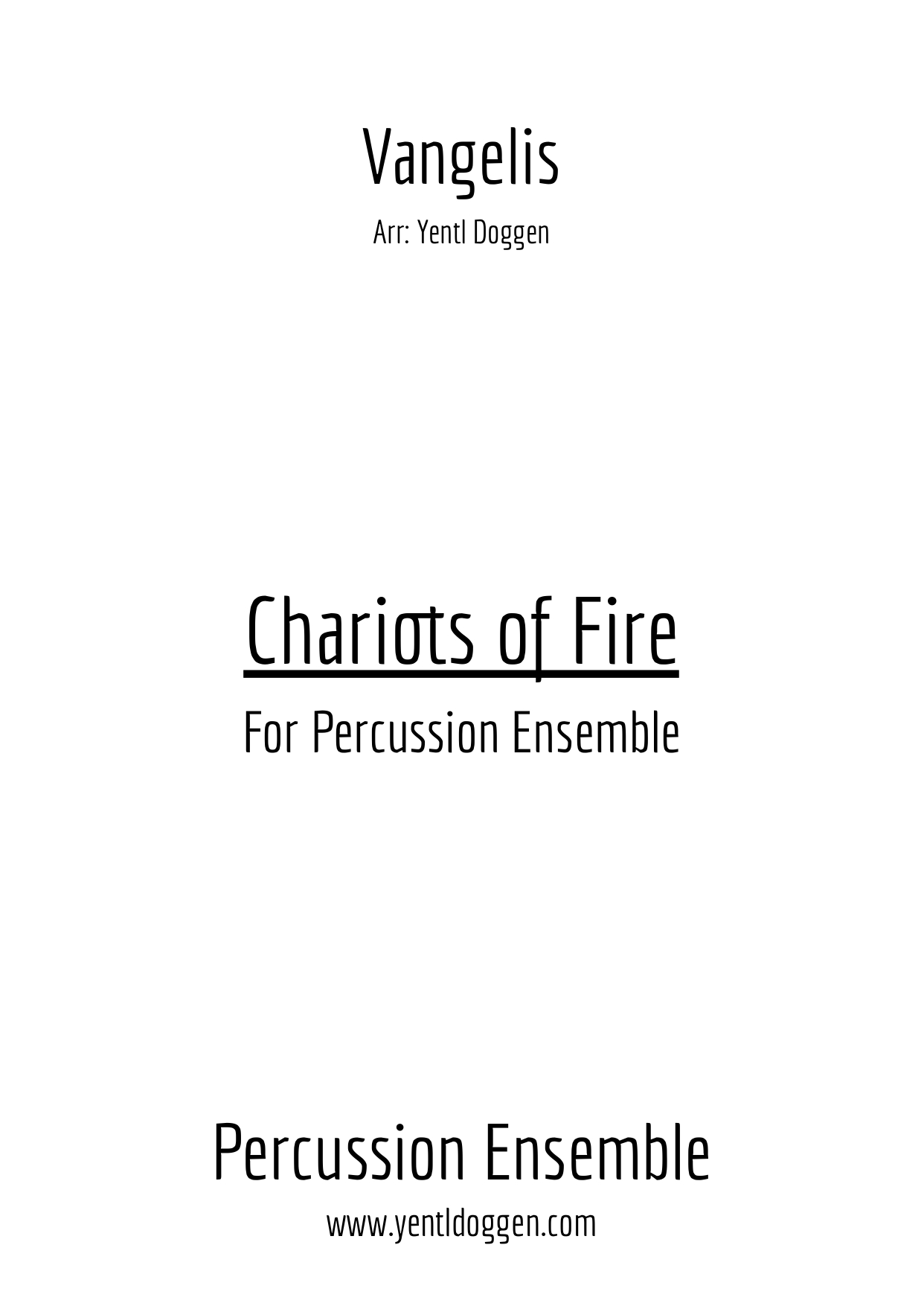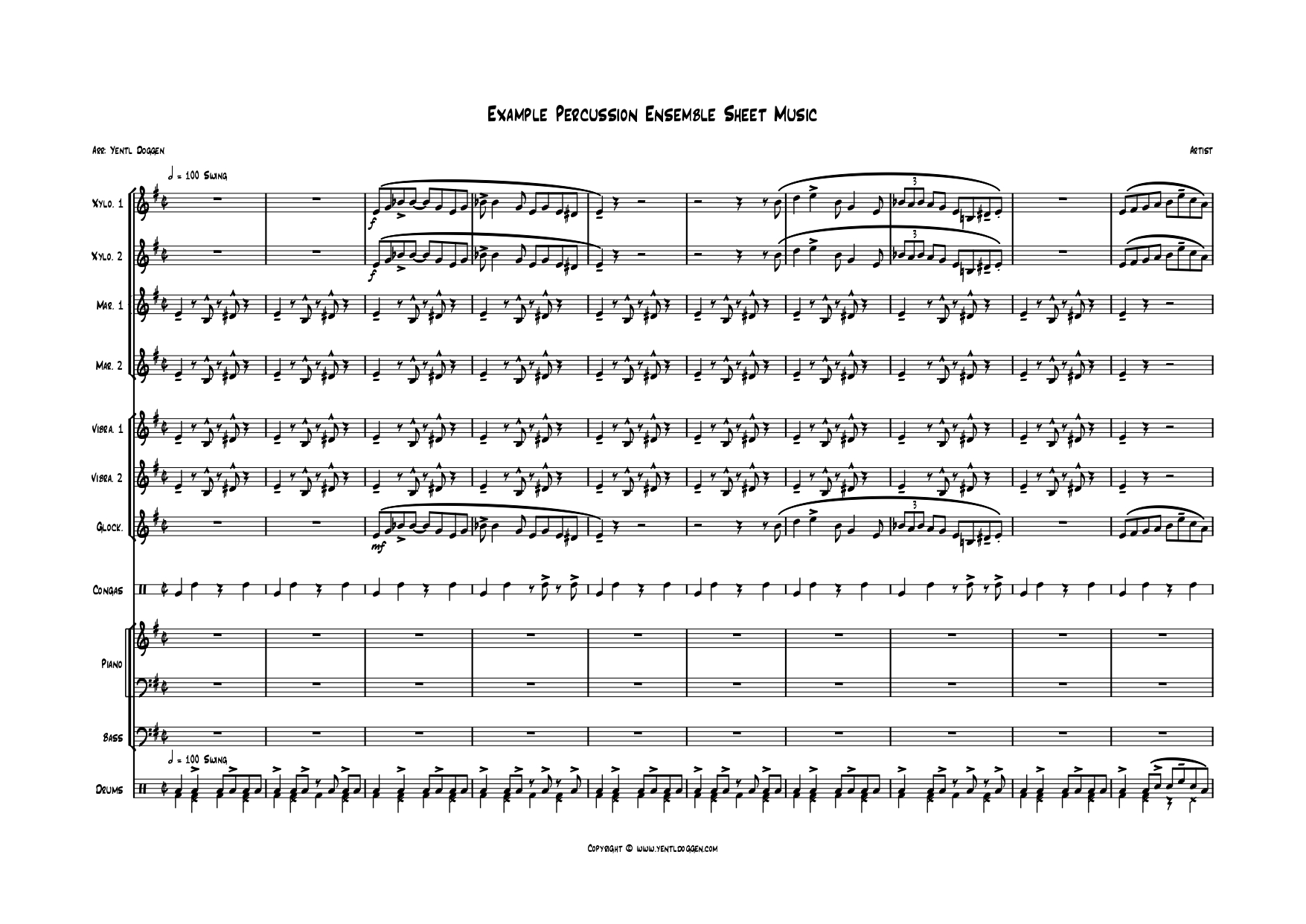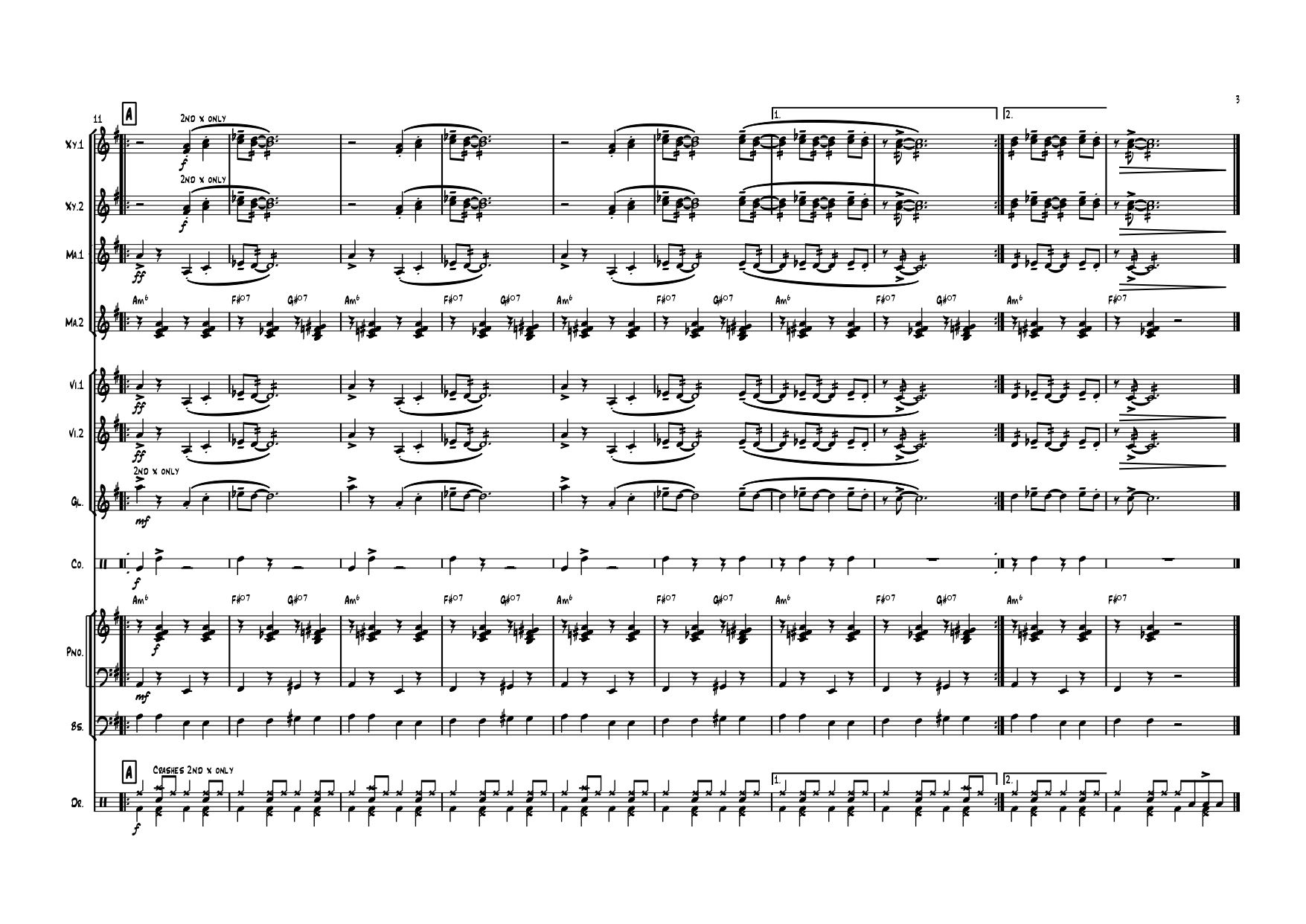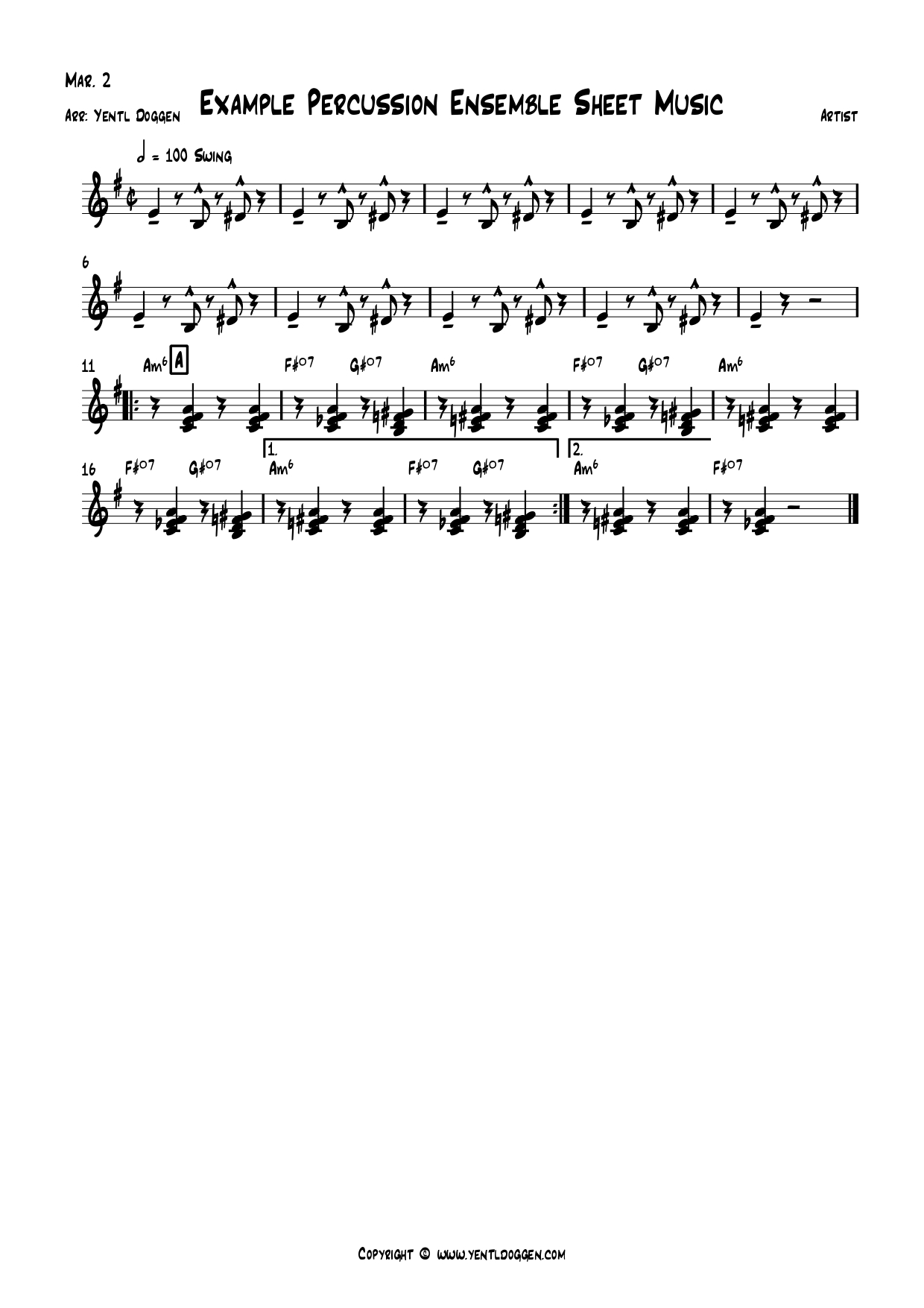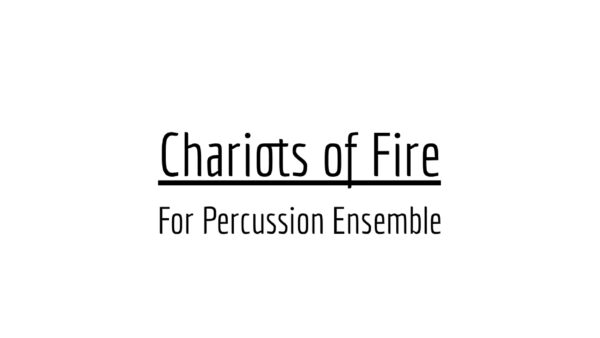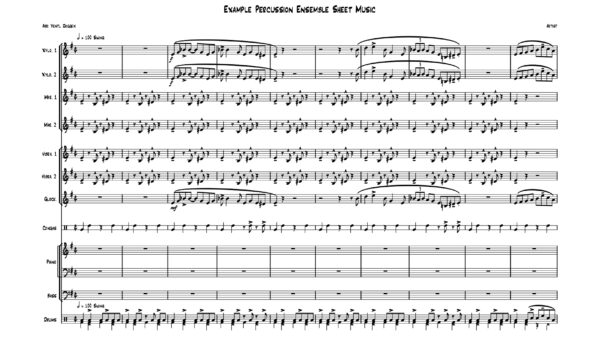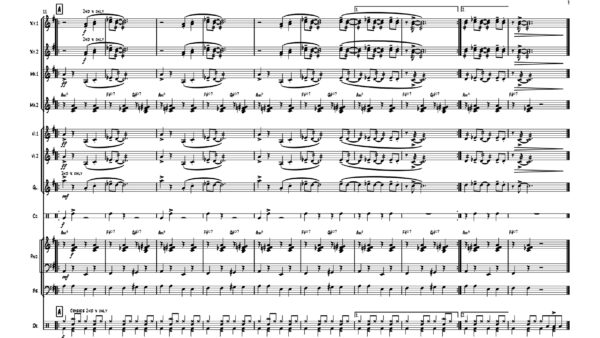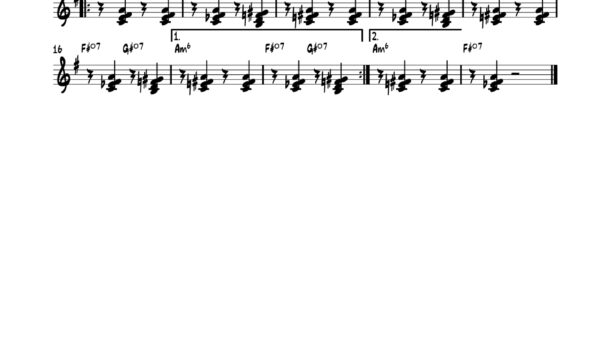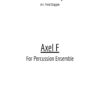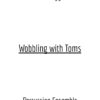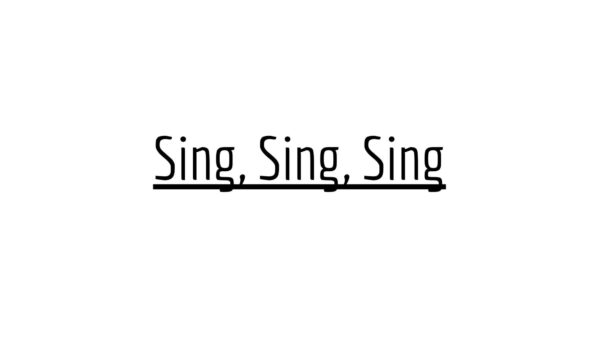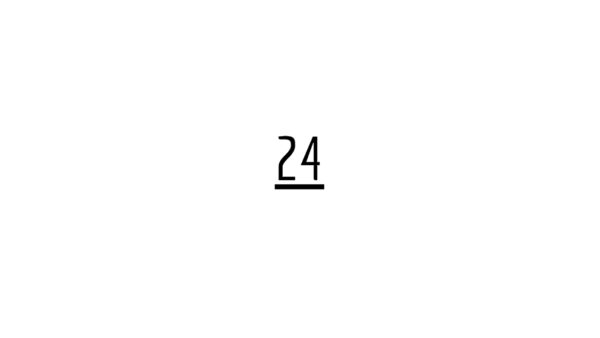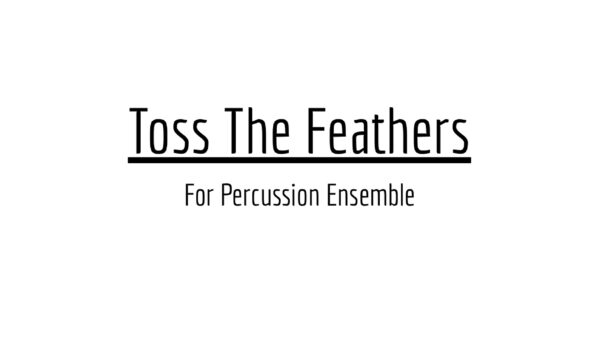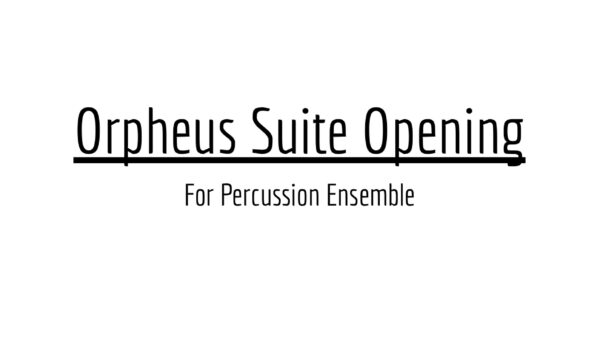Chariots of Fire for Percussion Ensemble | Full Score PDF
Digital download (PDF) for the Chariots of Fire for Percussion Ensemble sheet music!
Chariots of Fire
The well-known song Chariots of Fire is an instrumental theme written and recorded by Vangelis for the 1981 soundtrack of the film that goes by the same name. Although the initial title was Titles, because of its appearance in the movie’s opening titles, it was later changed to Chariots of Fire to make it easier for listeners and radio DJs to identify the piece. Vangelis was accused of plagiarism as the song was similar to the City of Violets by the Greek composer Stavros Logaidis. He won the case by proving he had already used similar melodies in his earlier compositions before the City of Violets was written.
The first version of the percussion ensemble arrangement of Chariots of Fire was written when I had just started university in 2012. It was the year of the London Olympics. After scrolling around on YouTube, I found Mr Beans’ version as performed at the opening ceremony. Although the video was the main inspiration to write the arrangement, I wanted our performance to be a little funkier, and that’s how Chariots of Funk became the title. We rehearsed this first version a couple of weeks before its first performance on October 2012 with the Drum- & Percussionband Paal.
Between the first and the final version of Chariots of Fire for Percussion ensemble, it underwent multiple transformations. After our first performance, I rewrote its structure, making it about a minute longer than the previous version. Afterwards, I added some extra instruments to fill in the mid-tones. Just last week, about ten years after its first performance, I revised the entire arrangement to make it more suitable to share on the internet. It’s also here that the title changed back from Chariots of Funk to Chariots of Fire. Unfortunately, I do not have a video of the 14-player format I’m presenting today. Still, I’m sure the video below will give you an idea. Here is more information on every part of this arrangement:
Chariots of Fire for Percussion Ensemble:
Xylophone 1:
People who have previously played percussion ensemble arrangements under my name know that my first Xylophone part always gets a crucial role. The melodic material in Chariots of Fire is pretty limited. Still, the first xylophone part forms an essential foundation for the piece. This player gets the dominant role in the main melody and the added blues-lick section.
Xylophone 2:
Xylophone two plays the same funky rhythm as the cowbell in an octave. However, since the funky rhythm consists of five notes every bar, the way it is played changes. In the first bar, it starts on the high D, and in the second bar on the low d. It makes it very confusing but so much fun to play. Even though this part was disliked by the player who played it in the Drum- & Percussionband Paal, it is still my favourite.
Marimba 1 and 2:
Both Marimba 1 and 2 are written to ensure all melodies in Chariots of Fire for Percussion Ensemble have the harmonic support they need. However, both parts at one point share melodic material with the melodies from the xylophone one part. In marimba one, that happens every time on the main theme; in marimba two, it is the blues lick.
Glockenspiel:
The Glockenspiel probably has one of the most vital parts of the Chariots of Fire arrangement and presumably doesn’t even know it. I’m not talking about the main melodies it plays, but its licks in between. The entire piece, the Glockenspiel plays a fifth on D in a subtle changing rhythmical figure. At first, the part doesn’t seem to be that important, but as I always explained to the player in the Drum- & Percussionband Paal. You are the little birds singing in the tree beside a busy highway. Make the Glockenspiel sing over all the noise the others make.
Vibraphone:
Welcome to the magical world of chords on the Vibraphone. If your Vibraphone has spinning fans, this is the piece to use it! With the marimba and piano parts, the Vibraphone is essential to the piece’s harmonic structure.
Drums:
The drums part in Chariots of Fire for percussion ensemble is pretty hard to play. The grooves are very funky and need some coordination to sound great. The drummer should feel where to put some accents and rim-shots as it all depends on the general feel the ensemble gives to the music. The drummer of the Drum- & percussionband Paal was a great player, and he always said this would have been his most complex song to play. Funny because, for most of the ensemble, it was the opposite.
Timpani:
Apart from the deep sound the timpani provides throughout most of the song, its role in the central theme is one of the favourites. It is there but goes unnoticed every time as the central theme takes all the attention. It’s one of those things. You can’t hear it until it isn’t there anymore, and you wonder where it went!
Tambourine and Maracas:
Over the years, I’ve played this piece with several percussion ensembles. Each time, it makes my percussion players feel underrated. Are their parts interesting? No, they aren’t. Are their parts important? Yes, they are. These parts fill up the song and make it sound like it should. Can the music be performed without these parts? Yes, it probably can. But does it sound much better with these parts? Absolutely!
Cowbell:
The cowbell part in Chariots of Fire for Percussion ensemble is the part that will make or break the performance. I said before that I initially called the piece Chariots of Funk, which has everything to do with the cowbell. Its funky pattern is prominent from the start and stays like that for the rest of the song.
Bongos:
There isn’t much special about the bongo part in Chariots of Funk, as it follows the same grooves throughout the entire song. Moreover, its primary role is to support the groove of the drummer. The bongo player gets a solo in the four bars before heading into the D-section. Although written out, it can also be improvised on the spot.
Piano:
In the original version of Chariots of Fire, the piano plays a vital role. Still, in this percussion ensemble version, that honour goes to the percussion instruments. The piano is written to support the ensemble with harmonic material. Furthermore, the quarter notes in the bass should push the entire ensemble in a forward motion.
Bass:
Plenty of jokes have been made about the fact that bass players only need three notes to succeed. Hold on because the bass player in Chariots of Fire needs to play four notes. Admittedly, the bass part in Chariots of Funk for percussion ensemble isn’t the most interesting. However, that doesn’t mean that it isn’t essential. On the contrary, the driving d-pattern is there so the entire ensemble can build on top of it. The bass part that I wrote is specifically for the bass marimba. If played by a bass guitar, the first eight bars of the A-section can be replaced by quarter notes as played in the Piano part.
My website has multiple ways to keep in the loop with music and travel-related updates. Make sure to follow my Instagram and Facebook pages to get the latest content on your socials. To get the updates in your mailbox, subscribe to the newsletter. I will post plenty of free drum lessons and other music and drum-related advice on this website in the future! Check out the other music education posts if you haven’t already!


